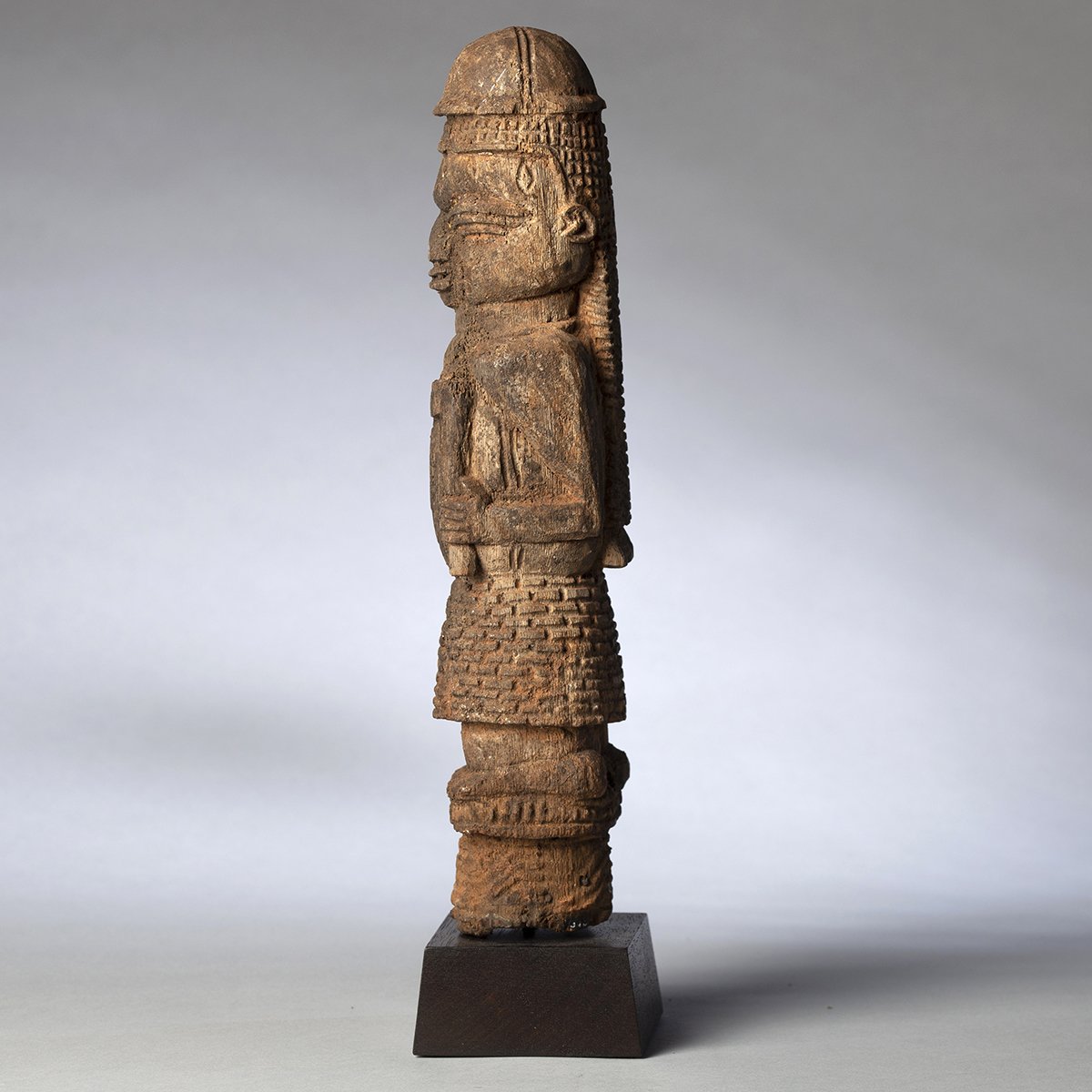 Image 1 of 7
Image 1 of 7

 Image 2 of 7
Image 2 of 7

 Image 3 of 7
Image 3 of 7

 Image 4 of 7
Image 4 of 7

 Image 5 of 7
Image 5 of 7

 Image 6 of 7
Image 6 of 7

 Image 7 of 7
Image 7 of 7








Edo Standing Court Attendant
Edo people, Kingdom of Benin
18th Century or before
Height 14 1/4"
Provenance: Oscard Agard, Newark, NJ
Sotheby’s Parke Bernet, October 1977 lot 570
La Jolla Museum of Contemporary Art, San Diego INV. 1958.102
This wooden figure from Benin represents a court attendant, who was responsible for maintaining order and assisting the king during court proceedings. Originally placed on a shrine in the King’s court within the royal palace, where it served as a symbol of the king's power and authority. It is a male figure with long hair at the back, a hat on the head, and carries an axe and staff in its hands. The axe and staff held by the figure represent the power to punish those who break the law, while the staff represents authority and control. In Benin culture, these two objects were used by court attendants to maintain law and order. Its long hair at the back is a symbol of strength, power, and virility. It also wears a necklace with a long pendant meant to represent ivory, which is also a symbol of social status and power. Rare with impeccable provenance.
Edo people, Kingdom of Benin
18th Century or before
Height 14 1/4"
Provenance: Oscard Agard, Newark, NJ
Sotheby’s Parke Bernet, October 1977 lot 570
La Jolla Museum of Contemporary Art, San Diego INV. 1958.102
This wooden figure from Benin represents a court attendant, who was responsible for maintaining order and assisting the king during court proceedings. Originally placed on a shrine in the King’s court within the royal palace, where it served as a symbol of the king's power and authority. It is a male figure with long hair at the back, a hat on the head, and carries an axe and staff in its hands. The axe and staff held by the figure represent the power to punish those who break the law, while the staff represents authority and control. In Benin culture, these two objects were used by court attendants to maintain law and order. Its long hair at the back is a symbol of strength, power, and virility. It also wears a necklace with a long pendant meant to represent ivory, which is also a symbol of social status and power. Rare with impeccable provenance.

